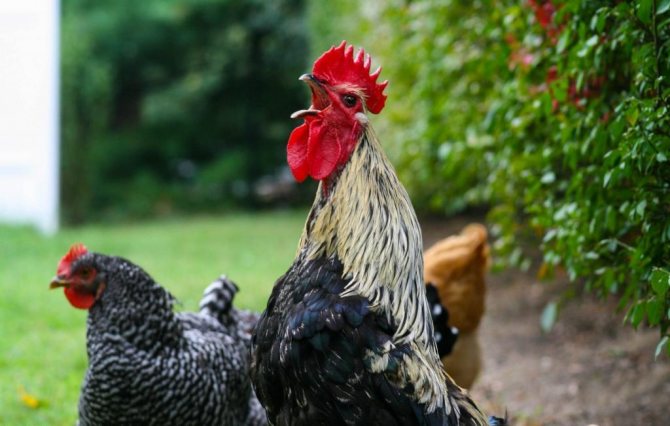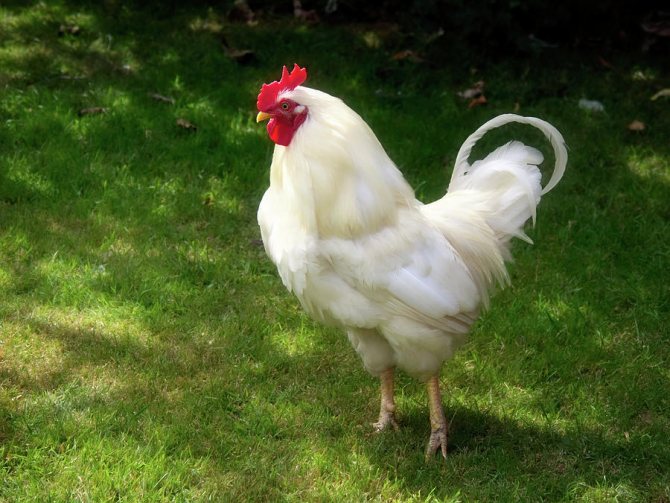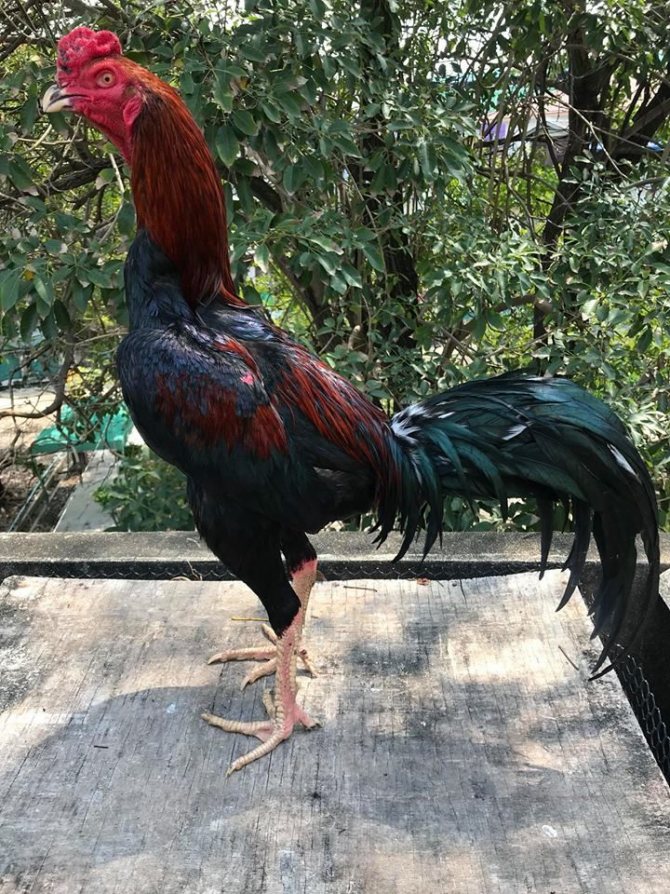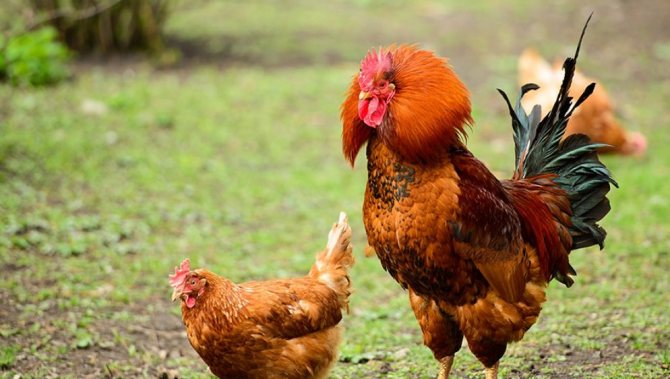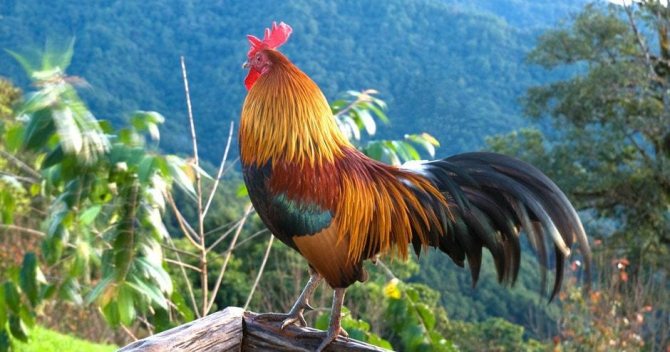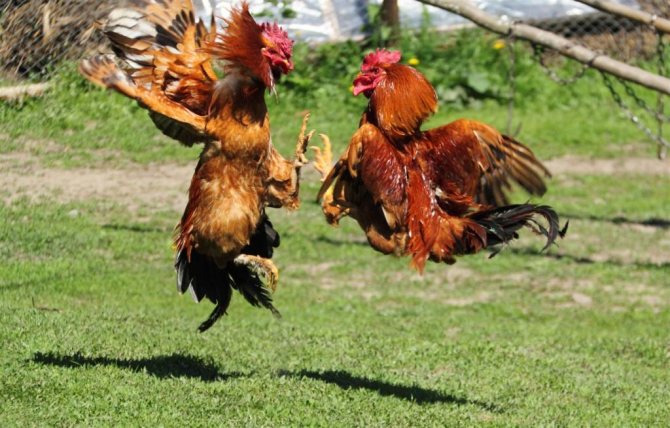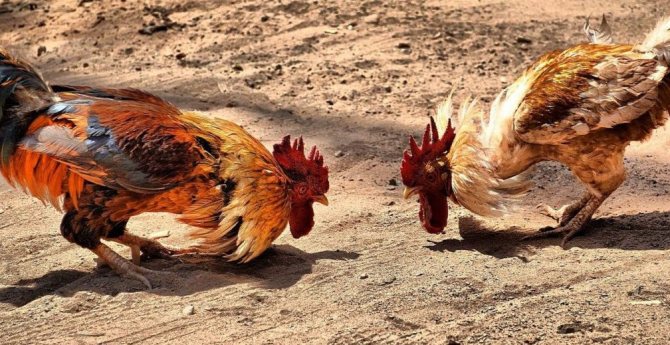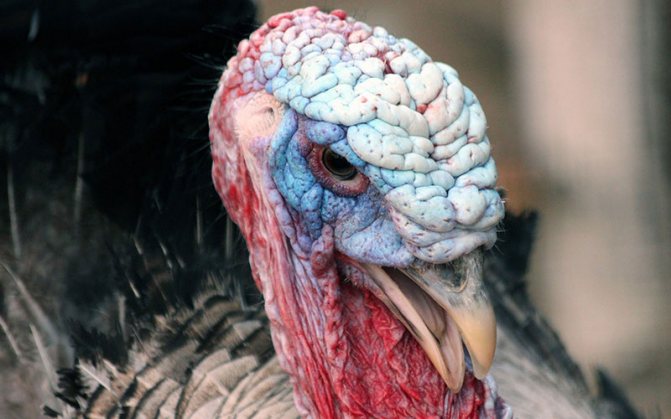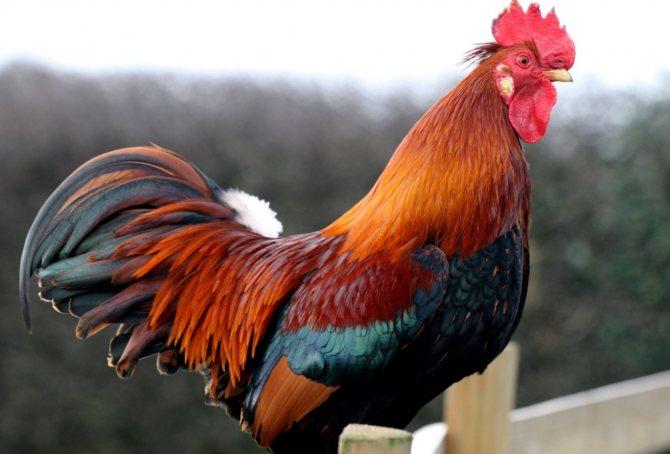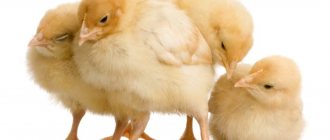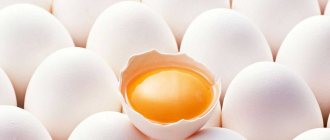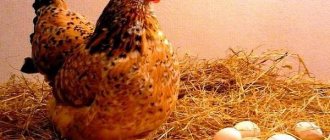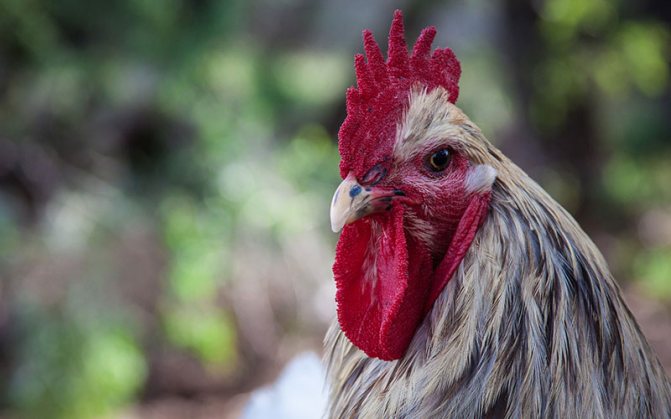
How many roosters do you need to feed a flock of chickens? What is the ideal proportion? And do you need to keep them at all, or can you just do with chickens? We are often asked about this at work, especially by novice poultry farmers. Today we would like to consider these questions and give answers to them.
We hope that in the end you will receive a sufficient amount of information and will be able to calculate the “ideal” number of males for your chicken herd yourself.
Introduction
When you only need eggs
Chickens will gain weight and lay well if they are comfortable. Namely, to organize lighting, ventilation, high-quality food, nesting grounds. Heating and walking, if necessary.
Hence the conclusion: for the regular production of eggs, a rooster is not needed. It does not affect the number of laid eggs either. In continuation of the topic, we recommend that you read the article "Can hens lay eggs without a rooster."
Needed or not
Before purchasing a male, you first need to decide what exactly it is for. The rooster is a fertilizer. And if there are plans to breed chickens, then you cannot do without it.
In addition to this, the male will provide order in the flock. Determine the daily routine. And will provide protection to chickens and offspring.
It was noticed that when chickens live without a leader, over time, their maternal instinct disappears. They stop incubating clutches. They have a more hectic day. Strong females appear in the flock. They belittle the weak, depriving them of their privileges: food, soft spot on the litter.
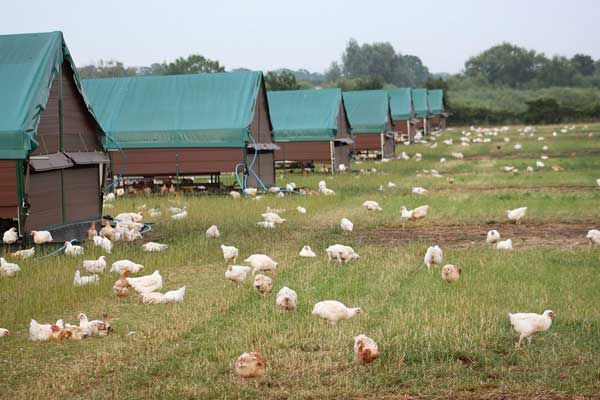

How to check if an egg is fertilized?
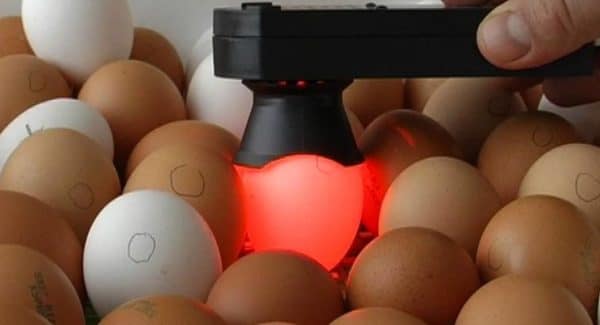

It is much easier to detect an embryo by translucent white eggs.
Fertilization of the egg is confirmed by the presence of a small bloody clot in the yolk. You can see it with an ovoscope or an ordinary lamp.
Important! It is much easier to detect an embryo by translucent white eggs than by examining dark ones.
The device selected for transillumination is placed in a darkened place. The egg is positioned so that it turns out to be a rounded end towards the light, and then carefully examine the contents for the presence of a small formation with vessels, indicating fertilization.
If no formations are found, the egg is discarded and eaten - it will not be possible to remove the chicken from it.
Interesting! A change in the color of the yolk along the edge indicates that the development of the embryo has stalled for one reason or another. Such eggs are usually discarded.
The life of a male in a flock
Benefits
Let's figure out in more detail why a rooster is needed in a chicken coop.
First of all, the male regulates the life of the inhabitants of the poultry house by the clock. Chickens, under his leadership, wake up and lie down at the same time. Take food. Go out for walks.
On the rights of a strong, the rooster feels that it is obliged to protect the hens from internal squabbles. And external stimuli that threaten the health and life of females. They can be predators.
Or a farmer who renews food in troughs and water in troughs daily. Sometimes it takes about an hour. Because the male does not allow you to approach the containers and chickens.
Negative points
On the other hand, keeping a rooster in a chicken herd also has disadvantages. The main one is aggressive behavior. Especially if there is more than one male in the territory.
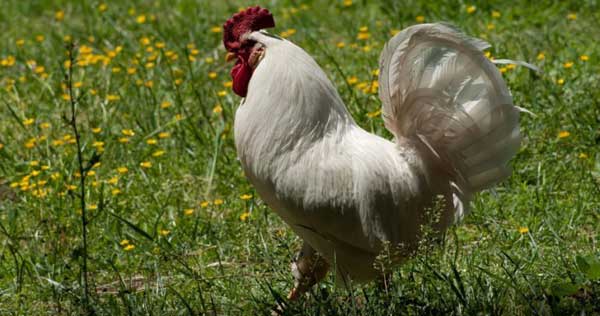

There is always a risk of physical harm to the farmer who maintains the livestock. And also for children who come close to the aviary. Or go directly to the chicken coop.
How to deal with this is described in the article "The rooster pecks and attacks: what to do and how to wean it."
Other cons
Often conscientious layers are looking for a place to hatch the clutch. But not everyone succeeds in doing this in peace. The leader of the herd is not used to having someone sit around. This is how he looks at the brood hen. Therefore, he begins to drive them around the chicken coop. Many farmers, after fertilizing the eggs, move the males to another house.
Roosters often spoil the appearance of chickens. In the process of mating, they injure the females. Feathers are ripped out, scratched. And they even beat them with their beak. Chickens are stressed by this treatment. And if an infection gets into the wounds, infection is possible.
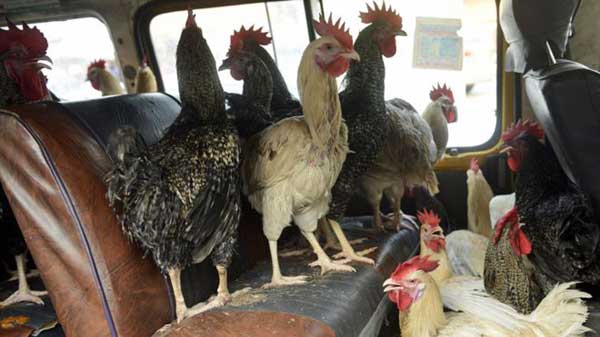

What to do if there are more or less males than the norm
However, situations in life are different, and there is not always a physical opportunity to adhere to the recommended norms.
Did you know? Chickens can make about 30 types of sounds.
In such cases, the following techniques will help:
- when there are too many males for the herd, pay attention to their behavior... If they get along peacefully, do not interfere with the chickens to rush, then you should not interfere with their life. However, when the males cannot divide the territory, then it is better to get rid of the most pugnacious ones;
- if there are too many chickens for the available number of roosters, then you can have more birds... In this case, try to take males from the same brood, one-year-olds, then there are less chances that cockfights will be arranged in your courtyard;
- it happens that females fall on 1 male less than the norm... Chickens can suffer from an excess of attention, so give them a rest every week, moving out the bird for 2-3 days.


Important function and other features
About egg fertilization
In order for the eggs to be fertilized, the rooster must contact the genitals with the cloaca of the hen.
It should be noted that with a high libido in the male, the quality of the seminal fluid decreases. In this case, not every egg will be fertilized.
And vice versa - with a small number of mating per day, the concentration of semen in a rooster increases. Find out more in the article How Roosters Fertilize Chickens.
Much also depends on how old the male is.
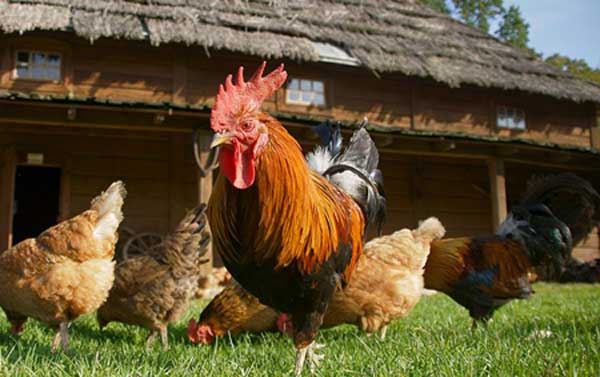

Age
Sexual maturation of males occurs at 4-6 months. There is an opinion that after two years of activity, the old rooster should be replaced with a young and healthy one.
Roosters, designed to improve the quality of the breed, are carefully selected. They must come from the best layers in the flock.
Moreover, in order for the chickens to give high-quality offspring, it is recommended to take the cockerel from another herd. So that he is not related to females.
One rooster can be kept in the herd for a maximum of 3 years. Further maintenance is unprofitable. The male continues to eat, as he ate. But the quality of fertilization drops sharply. And he is not gaining weight.


Details and details
Already at the 25th week of life, birds should have full puberty, but in representatives of meat breeds, this process occurs a little later. The activity of the male directly depends on its purpose: the lungs are more mobile and fertilize more chickens. If the average number of happy females in meat birds ranges from 10 to 15, in rare exceptions - 20, then the smaller ones in size and weight cope with 20-25, and some mate even with 50 females per day.
When asked how many roosters are needed for chickens, the answer is: one is enough for 10 chickens. In this case, both the eggs will be fertilized and the birds will be happy.If the male is alone in a too large flock, there is a risk that not all eggs will give birth to chicks. If the goal is not the reproduction of birds, and the rooster is needed only for decoration, the second will not be required. On the contrary, a large number of males lead to aggressive behavior.
When a couple of roosters live in the same chicken coop, they feel like competitors and seem to be dividing territory, which means that a fight between them cannot be avoided. It comes to the point that in some cases, after a showdown, only one remains alive. In order to avoid showdowns and consequences after them, it is better to limit yourself to one Plymouth Rock.
If, nevertheless, there is a need to keep two males, then it is better to choose one younger, the second older. During the purchase, it is worth taking a closer look at their behavior: it is advisable to take calm individuals, then there is a chance that they will get along together.
If after the purchase it became clear how one always prevails over the other, you will have to sacrifice the one that is weaker.
The number of chickens and roosters in the herd
All birds are different
There are many breeds of chickens in the world, differing in physical characteristics and orientation.
Chickens of some breeds are more active, with a quick temper. Not able to care for offspring. Others, on the contrary, are phlegmatic, submissive. They can hatch their own and other people's eggs.
Accordingly, different females have different requirements for males. Although, the main ones are similar. Let's find out how many roosters should be kept in the herd.
Forming families
Now let's find out how many chickens are needed for one rooster. It depends on the number of female livestock.
For example, 20 chickens with an egg orientation will need two cockerels.
Fighting breeds require the same number of males per 10 females.
And for 6 males of meat orientation, you need to keep 50 females.
More cocks should not be kept. This leads to frequent fights and an increase in the level of aggression in the herd. In males, the struggle for a place in the sun is genetically inherent.
In addition, many males will seriously injure chickens. Since the number of pairings will double. And the volume of fertilized eggs may decrease.
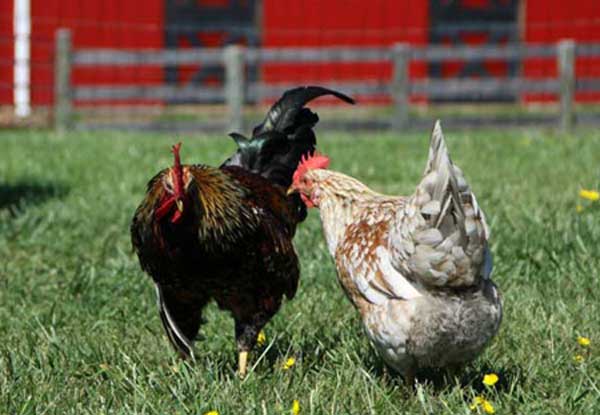

Best ratio for egg-laying hens
But when breeding egg-bearing breeds, breeders did not at all strive to create large birds that give a lot of meat. The challenge here was to maximize the number of eggs that chickens will produce in a year. Therefore, roosters are smaller, lighter and more mobile. In this case, one rooster is enough for a flock of 20-25 chickens. At the same time, he will surely have time to fertilize each of them, and the owner will receive high-quality eggs, any of which can be laid in an incubator in order to get a cute yellow chicken after 21 days.
About cockfighting
Allotted territory
Each rooster needs space. Males love freedom. Cramped conditions will negatively affect behavior, quantity and quality of mating.
For normal life, one male is given 0.5 square meters. m.
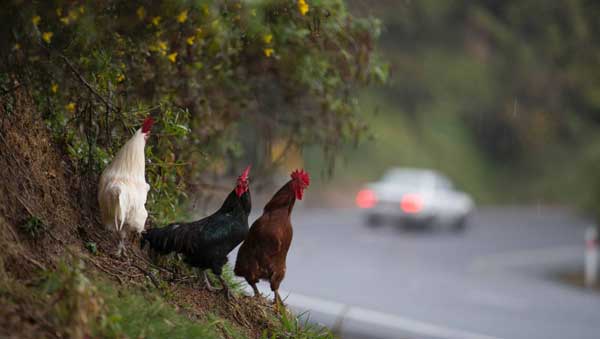

How to avoid fights
So that the roosters do not arrange quarrels and fights, they must be properly resettled on the territory of the chicken coop. All livestock is divided into families of at least 10 chickens.
How many roosters are needed per family determines their age and breed. Most often, in one family, it is enough to have one adult rooster for ten chickens. As a replacement, it is recommended to keep a young male as well.
With this family planning, you need to take the advice of experienced poultry farmers. And to settle on the same territory the cockerels that originally lived in the same family. They managed to get used to each other. They will not quarrel and fight.
If fights do occur, competitors are settled in different corners. There are other methods described in the article "What to do if roosters fight constantly".
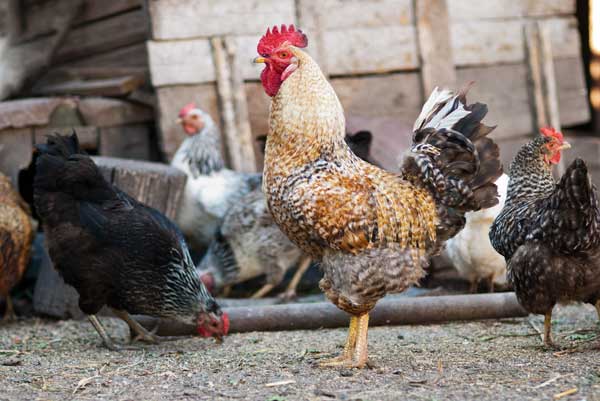

Does a hen need a rooster to lay eggs?
The eggs in the body of a healthy chicken are formed constantly, regardless of the presence or absence of a rooster. Balanced nutrition and proper housing conditions ensure that eggs are obtained daily without a male.
Therefore, in farms that raise and keep chickens for the subsequent sale of egg products, roosters, as a rule, are not kept.
However, the opinion of poultry farmers on this matter is still ambiguous. Farmers who are opposed to keeping females without males argue that the presence of a rooster has a beneficial effect on both the well-being of the hens and the quality of the eggs produced.
The last statement is argued by the fact that the substances that ensure the vital activity of the embryo are useful for the human body (there is no scientific confirmation of this fact).
Choosing a rooster
Rules and guidelines
To improve the qualities of the breed, it is important to select the right males for the tribe. When choosing, you should pay attention to the appearance, temperament of the cock.
The male must be active, lively, show the qualities of a leader. His parents should be healthy and thoroughbred birds, without defects in appearance.
The thoroughbred male is distinguished by straight paws and toes. The scallop is bright red. Small bumps in place of the spurs.
The features to look out for when choosing a male are described in the article "What a rooster should look like: a description of a bird".
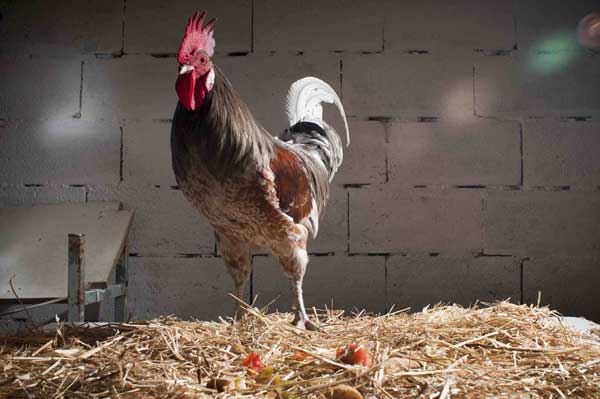

Chicken floor
If a farmer decides to breed chicks, he must be able to distinguish hatched chicks by sex. The main difference is the growth on the paws, which is present only in males. Females do not have this feature.
There are also folk methods for determining the sex of chickens. One is to hold the chick upside down. The chicken will hang quietly without moving. And the cock should dodge, trying to return to its original position.
Find out more in the article: "Rooster or Hen: How to Determine the Gender of a Chicken."
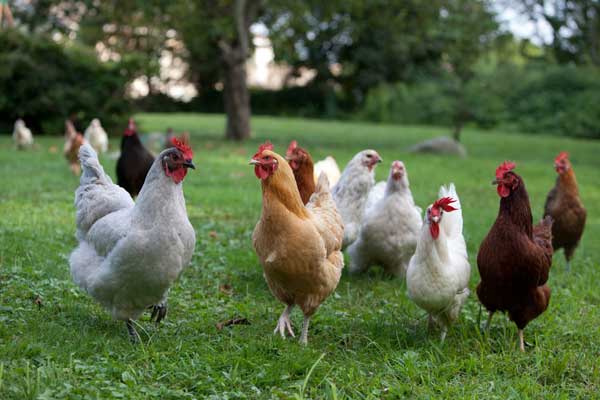

How many chickens should there be for one rooster?


For chickens of egg breeds, there should be no more than 15 heads for one producer, no more than 12 for general use breeds, no more than 8 heads for fighting, heavy meat breeds and small breeds. If exceeded, the required full fertilization of eggs may not be achieved.
A large number of males should not be kept in the flock. Constant competition leads to violent fights between birds. Frequent mating can injure chickens as well.
The age of the rooster is very important. Young males may not immediately begin to pay attention to females. It is recommended to keep two males in the herd: a young one and an adult.
Roosters are essential for those farmers who breed poultry and are interested in the number of chickens. Eggs without the participation of a rooster will not be fertilized. Chickens will not hatch from them. If there are no roosters in the herd, then the females practically do not show the instinct of hatching eggs, although they will lay regularly.
How to tell a chicken from a cockerel?
Males have a small genital growth in the area of the cloaca. The chickens do not have it.
The method used by our grandfathers is to turn the chicken upside down, gently holding it by the paws. The hen will remain calmly hanging upside down, and the cockerel will try to look around and make an attempt to restore balance, pulling his head up to the level of the abdomen.
How does a rooster fertilize a hen?
In males, the genitals are a pair of yellowish-white testes with thin vas deferens that drain into the cloaca. The genitals of females are an uviform ovary and an oviduct, which also flows into the cloaca.
The process occurs with a short-term contact of special holes (cloacas) used by males and females to remove waste products.
In each group of the chicken family, there is a leader - the largest and strongest male.At the slightest attempt on primacy in the pack, violent fights occur between competitors, reaching the level of blood. The leader has the right to mate with any female at any time.
Flirting, the rooster walks around the chicken and scratches the lowered wing with its foot. He necessarily shares his prey with the female that attracts and, in general, in every possible way gives her all kinds of signs of attention provided for by love bird etiquette.
During the moulting period, the situation changes. Chickens are on their own. The male beats and drives the females away from the “table”. As soon as molting stops, the world returns to a large chicken family.
The chicken has a hole on its back, and the rooster is trying to find it by fiddling with its paws. People say "a rooster tramples a chicken." In general, sexual intercourse in chickens is a tough spectacle and absolutely devoid of elements of eroticism. During mating, the rooster is on top and holds the girlfriend by the back of the head with its beak.
Mating in birds is a short-lived and often repetitive process. With abnormally increased sexual activity of males (up to 22 mating per day), the amount of seminal fluid and its concentration in males is reduced by 2 times. By contrast, limiting the number of intercourses increases the percentage of egg fertility and the viability of the chicks.
In the process of fertilization, the cloaca of the male hen is inverted, while the gonads begin to secrete seminal fluid. Upon contact with the female's cloaca, the seed enters her genitals, where it remains active for up to 20 days. All eggs laid during this period will be fully fertilized.
Every day, an egg is formed in the hen's ovary, which is the egg. Through the oviduct, it enters the female's cloaca, where it meets the male's semen. Fertilization takes place through the soft shell of the egg. After a day, the shell hardens, turning into a shell, and the egg is brought out.
Read also: Reasons why turkeys fight
When the sperm comes into contact with the egg, an acrosome reaction occurs. A thread is released from the acrosome of the sperm, which penetrates through the receiving mound of the egg. The egg yolk in chickens is dissolved by sperm lysines, otherwise called gamones. Only the head, the connecting section and the neck of the sperm penetrate into the egg. The tail is detached.
What does a fertilized egg look like?
During fertilization in birds, a lot of sperm (polyspermia) enter the egg at the same time. From 20 to 60 viable spermatozoa penetrate into a hen's egg. Only one sperm is fused with the egg.
Remaining in the oviduct, sperm cells that did not participate in fertilization retain their activity for up to 3 weeks, and can fertilize eggs during the next ovulations.
By placing an egg in front of a bright light source, you can determine if it is fertilized. If a dark speck (embryo) is clearly visible in the light, then chickens can be expected in speed. If the embryo is absent, such eggs can be safely sent for food. It is recommended to use an ovoscope to examine eggs.
How to prevent rooster fights
When several roosters live in the poultry yard, fights will arise between them, since this behavior is typical for these birds. The owners' task is to prevent strong aggression and bloodshed. Fights between young cockerels are a necessary thing, so their character is tempered. But fights between mature males are best avoided, since they introduce confusion in the flock, lead to a decrease in egg laying.
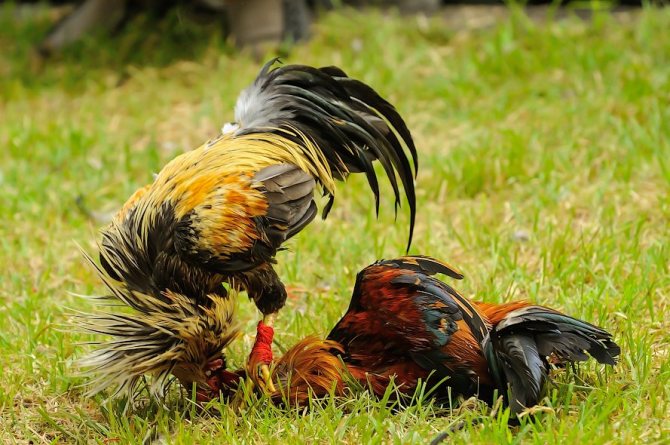

To prevent quarrels between males, adhere to their optimal number, provide all birds with free access to feeders and drinkers, and also take the necessary territory. As practice shows, if such conditions are provided, then over time, each rooster has its own groups of chickens and fights are minimized.
Did you know? If the rooster cannot stretch its neck, then it will not be able to crow. People can hear a rooster's crow at a distance of 2 km.
Now you know how chickens breed and why a rooster tramples a chicken. If you decide to start breeding these birds, then just provide the birds with good care and nutrition, and nature will do the rest for you, and very soon your chicken farm will be replenished with small chickens.



